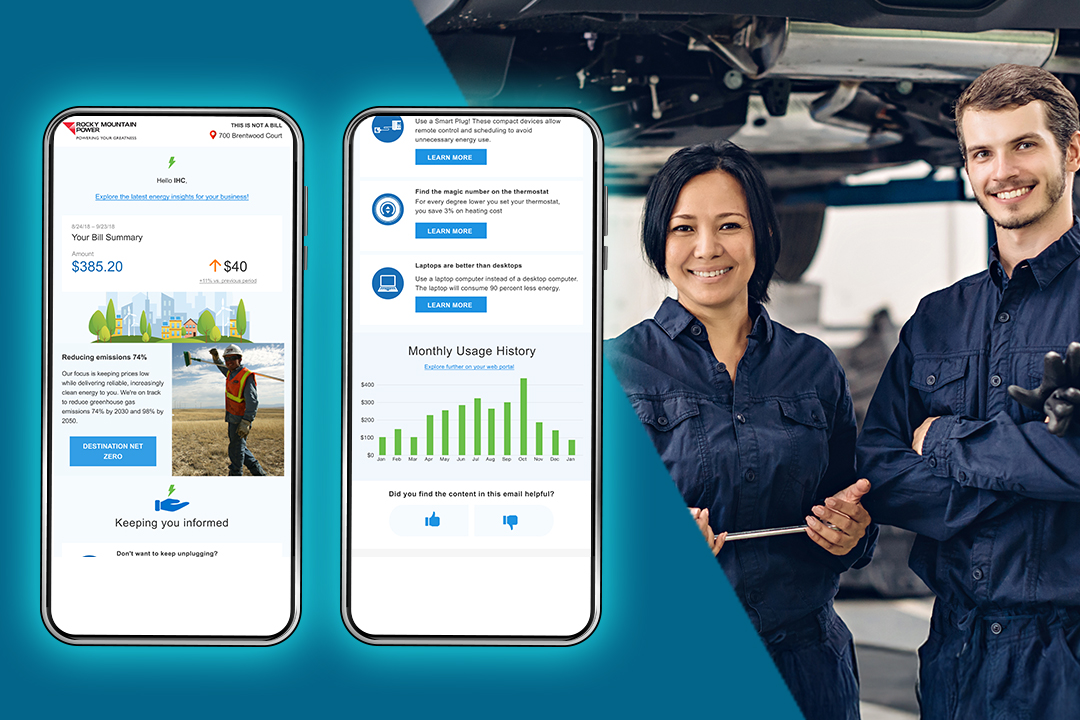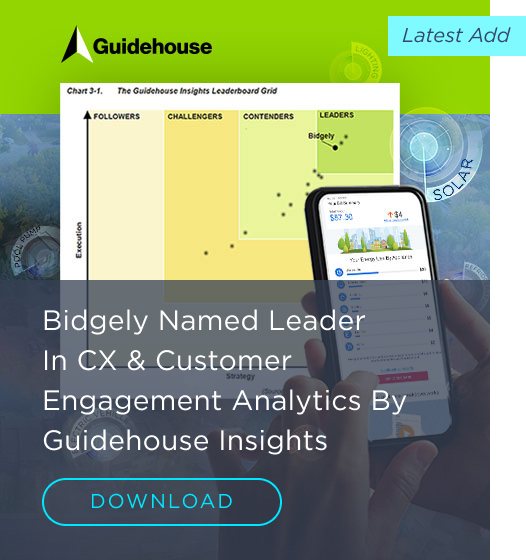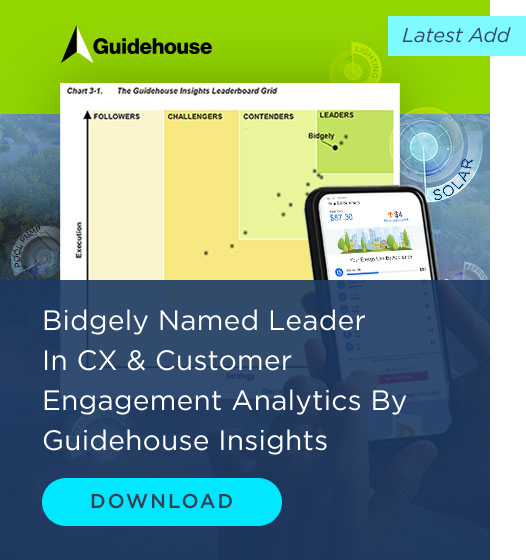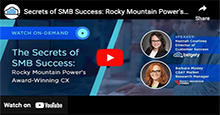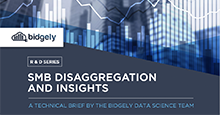Creating Personalized SMB Customer Journeys
Beyond monthly energy use summaries, the SMB customer profiles enable RMP to identify personalized next-best insights and interactions for every business, and communicate recommendations via proactive alerts, such as bill breakdowns paired with product offerings like demand response for batteries, HVAC rebates, and more.
The resulting engagement program is consistent and relevant, establishing the utility as a partner that SMB customers can rely on.
“We’re offering them something other than a bill, but rather information about how to control their bills. With that information, they’re empowered to manage any rate increases and make smarter decisions about either the time of day that they’re using electricity or what equipment they’re using,” Modey says.
Measuring Success: Beyond Expectations
The results of the program have exceeded Rocky Mountain Power’s expectations. The utility has seen significant improvements in customer satisfaction scores across multiple dimensions, not just energy efficiency.
“The customers who recalled the reports gave us high marks across many categories within that survey. Everything from being more involved in the local community to helping the environment, which have nothing really to do with energy efficiency,” Modey states. “We saw a lift across most of the categories within the survey, not just energy efficiency.”
More remarkably, she says, “Even the customers who didn’t say they liked the Reports still gave us higher scores than those customers who did not recall receiving the reports.”
Advice for Other Utilities
For utilities considering a similar approach, Modey offers practical advice.
“I would advise other utilities to consider whether they really need savings from this type of program. It’s not that the program won’t deliver savings — because they might come through indirectly if you link to your incentive programs — but you don’t necessarily need to attribute it to these reports to make them valuable.”
She also emphasizes that impeccable data shouldn’t be a prerequisite for getting a BER program started.
“Even if your data is not perfect — and I don’t know any utility that has perfect data — we don’t have email addresses for all of our customers. We don’t even know if all of those email addresses are going to the right customer or the decision maker… If we waited until our data was perfect, we would never do anything with business customers. So, you have to start somewhere. Your data quality will improve as you go.”
The Future of Utility-Business Relationships
As J.D. Power has emphasized in their survey report, far too many business customers are not receiving proactive outreach from their utility. It’s incumbent upon utilities to change that reality and establish a stronger collaboration with their SMB customers.
“If we hadn’t done the reports, then I don’t think our customer satisfaction would be as high with our business customers. In fact, I know it wouldn’t be as high,” Modey concludes.
For RMP, the consistent engagement, personalized insights, and proactive communication have transformed their relationship with SMB customers. Since 2020, RMP’s SMB customers have been receiving monthly BERs. Ongoing survey measurement continues to reveal strong engagement with the Reports and a lift for customer satisfaction.
“Our goal is to use BERs to advance our SMB customers from awareness to participation. And with that evolution, the by-product is a more satisfied customer.“
Learn More
If you would like to learn more about RMP’s Business Energy Reports program and Bidgely’s SMB engagement capabilities, download the Bidgely SMB Solution Brief or visit bidgely.com/solutions/small-medium-business.
Hear more from PacifiCorp’s Barb Modey by watching the on-demand webinar: “Secrets of SMB Success: Rocky Mountain Power’s Award-Winning CX.”
